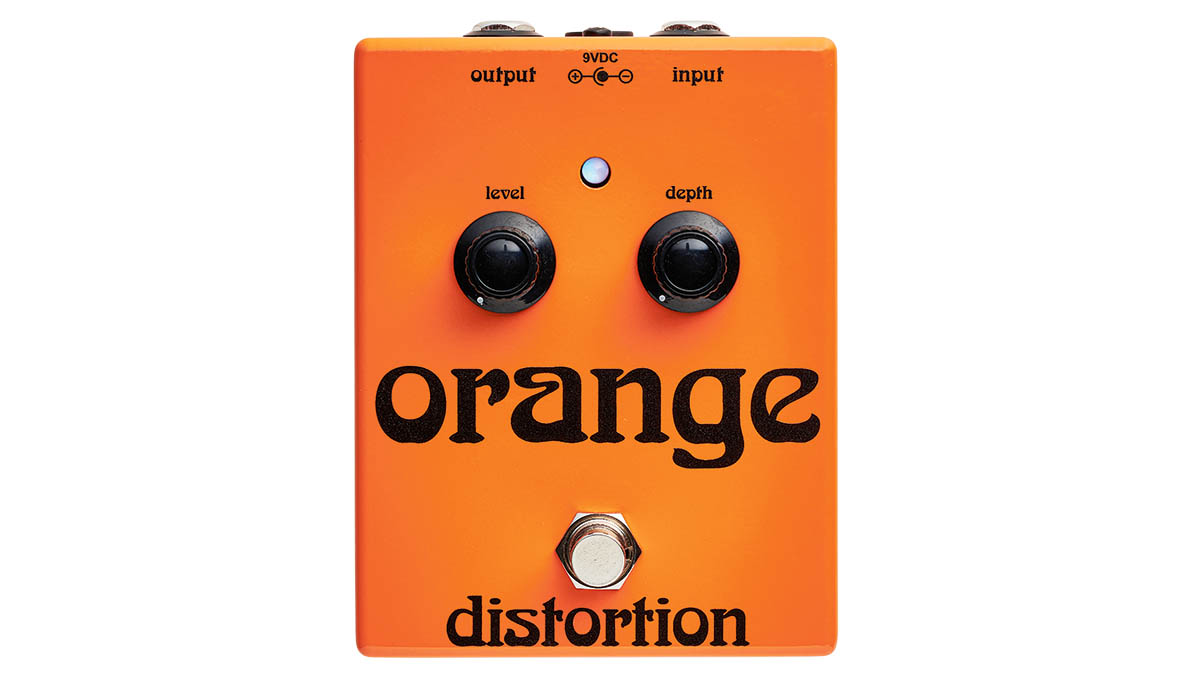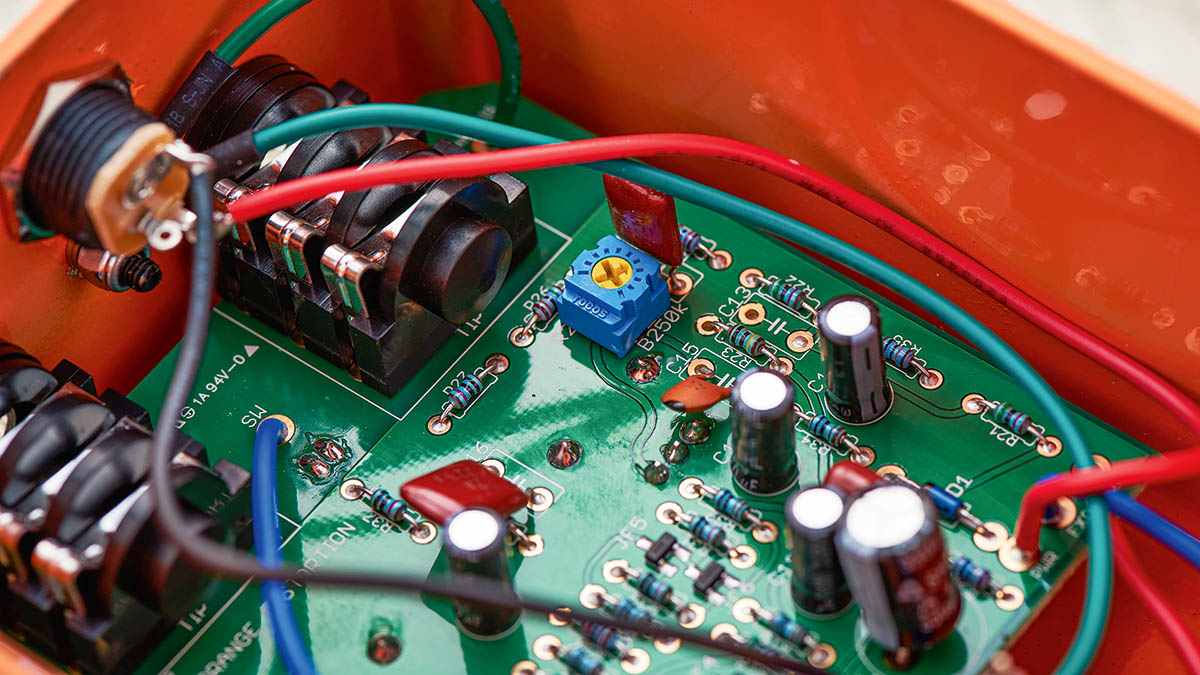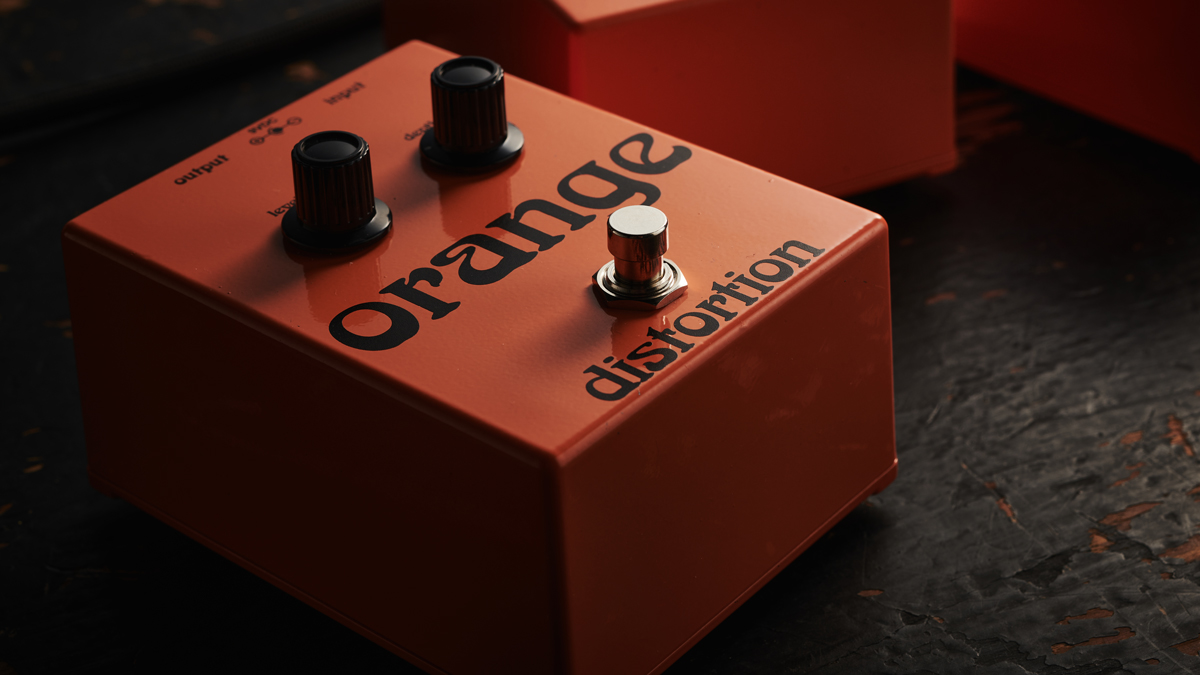Guitar World Verdict
Orange has done a great job of delivering a pedal with the look of the original while bringing it right up to date with features that current pedal users would expect as standard.
Pros
- +
Welcome revival of a forgotten pedal.
- +
Ease of use.
- +
Modern features and design paired with excellent voicing.
Cons
- -
Size still could be an issue for some with less ’board space. Minimalist controls mean this pedal is a bit limited for on-the-fly adjustment.
You can trust Guitar World
One of the great British amplification brands, Orange has a practical modern range of pedals including the Fur Coat, Two Stroke and others. But what is perhaps less well known is the fact that the company had a series of pedals way back in the 1970s – the Phazer, Sustain and Distortion.
These units weren’t produced in large quantities and are now very rare. Roll on to a couple of years ago and some photos of these turned up in online message boards, prompting something of a clamour on Orange’s Facebook pages for them to be reissued.
Orange responded by digging out some original schematics – complete with 40-odd-year-old tea stains – but didn’t have any actual pedals. Consequently, the company put out a request via its social media channels to chase down examples of the pedals and find out directly from owners what the playing experience and sound were like.
The upshot here is that all of this information was passed on to Orange designer Ade Emsley who came up with this set of three same-size recreations that sport the vintage orange colour scheme and Art Nouveau typography.
While being based on their vintage counterparts, these UK-made pedals aren’t exact clones; they are essentially upgrades that fulfil the same functions with improved performance and modern features, such as LEDs and nine-volt input sockets, with the socketry on the front, allowing close side-by-side placement.

All three can run from battery power if desired, but considering that most users these days use nine-volt adaptors, Orange didn’t want battery clips flapping about so have made a battery clip an after-market addition that can be easily soldered into place. The pedals’ height offers just the right amount of space for a PP3 to naturally be held firmly in place once the four-screw baseplate has been reattached.
The construction of the pedals appears extremely solid with hard-wired footswitches directly fixed to the chassis rather than attached to a PCB, so switch replacement at some point in the future would be a simple task.

The original Orange Distortion pedal featured a back-to-back diode design, but not so for this one. The circuitry here has been built from the ground up and is an amp circuit that includes a tone stack with preset bass and midrange but with treble that can be adjusted via a trimmer inside the casing.
Kick in the pedal and there’s a slight bass roll-off and (with the default factory-set position for the trimmer) a top-end that’s slightly brighter than your regular tone. The treble trimmer will allow more brightness or a more subdued top-end if you want to set the sound to whatever best suits your amp.
You can use the pedal as a clean boost if you keep the Depth (basically gain) knob at zero and dial in your desired volume jump with the Level knob above its unity gain position around two o’clock. But increasing the Depth brings in increasing levels of Brit-style amp drive, which runs from a mild crunch through to screaming stack with loads of sustain. Speaking of which…
Verdict
Orange has done a great job of delivering pedal with the look of the original while bringing it right up to date with features that current pedal users would expect as standard. While that retro look and bulk will appeal to a certain set of users, others may consider the size a little too clunky in these days of taking advantage of every inch of pedalboard real estate – but that’s a personal choice.
Sticking rigidly to that original vintage aesthetic has also precluded the company from making some practical control changes. The Distortion would have increased flexibility via an easily-grabbed Tone knob (or more), rather than an internal trimmer. That said, there will be players who prefer to set the ideal tone for their setup and not have to think about it again. Overall, it’s a welcome return.
Specs
- PRICE: $249 / £199
- ORIGIN: UK
- TYPE: Distortion pedal
- FEATURES: Buffered bypass, LED indication of gain reduction
- CONTROLS: Level, Depth, internal Treble trimmer, Bypass footswitch
- CONNECTIONS: Standard input, standard output
- POWER: 9V DC adaptor (not supplied) 3mA
- DIMENSIONS: 93 (w) x 120 (d) x 75mm (h)
- CONTACT: Orange Amps
Trevor Curwen has played guitar for several decades – he's also mimed it on the UK's Top of the Pops. Much of his working life, though, has been spent behind the mixing desk, during which time he has built up a solid collection of the guitars, amps and pedals needed to cover just about any studio session. He writes pedal reviews for Guitarist and has contributed to Total Guitar, MusicRadar and Future Music among others.
“Sonically excellent… we found that it could be a viable substitute for our vintage 1970s pedals”: Hamstead x That Pedal Show Redwing Analogue Stereo Modulator review
“The original Jordan Boss Tone was probably used by four out of five garage bands in the late ’60s”: Unpacking the gnarly magic of the Jordan Boss Tone – an actual guitar plug-in that delivers Dan Auerbach-approved fuzz












